The Carbon : Nitrogen Ratio in Composting
This page builds on the basic information relating to Greens and Browns given earlier.
Carbon and nitrogen are the most important of the many elements required for microbial decomposition of organic matter to produce compost. The C: N ratio (Carbon : Nitrogen Ratio) is often referred to in composting books and websites although less emphasis is placed on it than was the case, as home composters are now encouraged to refer to Greens and Browns and attempt to obtain a balance of these rather than achieve a specific C:N ratio.
However, I have included this section as it adds to the understanding of the composting process. We are used to the fact that some materials decompose more quickly than others decompose but may not have made to connection with their carbon content. Those with the simplest molecules, e.g. simple sugars such as Glucose, breakdown fastest while those with complex carbon molecules, such as lignin, take considerably longer and require greater enzyme activity. Carbon makes up about 50 percent of the mass of the cell of microorganisms, provides an energy source while Nitrogen is a key component of proteins, and is essential for microbial growth. The C: N ratio gives the amount of carbon in a material compared to the amount of nitrogen, which is expressed as 1. The higher the C: N ratio the more carbon is present e.g. pig manure has a C: N ratio of 6:1, which means that there are six units of carbon present for every unit of nitrogen
While the C:N precise calculation of the C:N ratio is not actually necessary and garden composters may accept mixed garden waste, excluding woody items which take longer to decompose and still produce excellant compost. In our community bins I accept mixed garden waste which I layer with browns and natural activators. There are differing opinions as to the best C: N ratio. Generally, we accept the best ratio as being either 25:1 to 30:1. That is 25 or 30 parts carbon to each part nitrogen by weight. Other sources recommend a range of between 20:1- 40:1. At the lower C: N ratios there will be excess nitrogen provided which can result in the production of ammonia. This has the unpleasant odour that many composters will experience at some time in their composting career. At C: N ratios of over 30:1 there will not be enough nitrogen to support sufficient microbial growth and the microbe population will be too low to produce sufficient heat with the result that the decomposition process will be very slow.
When composting with worms the 30:1 has been found to provide the best compost quality , but the worm population appeared to grow more quickly at 40:1. To confuse the matters further some commercial compost producers operate at a ratio of 25:1- 30:1 as this results in the materials decomposing as more quickly.
Indeed, the ratio in a single bin will vary at different times if we just add material as it becomes available. The formula used for the calculation of ratio is complicated and is given at the end of this section for reference and completeness but I do not expect many home composters to use it. I have also included details of the Klickitat County C: N Calculator. This is simple to use and may be of interested to schools, colleges, community groups and those who wish to take a more scientific approach to their composting. This easy to use calculator and is designed for home composting rather than professional or agricultural applications and I would recommend that you try it.
Another calculator is provided on the Aerobin website to enable users to check the ratios: (https://www.aerobin400.com/aerobin400-UK/compostsimulator.aspx) This "Simulating composting in your Aerobin" software enables users to enter the weights the different materials being added to their bin and will calculateb Carbon & Nitrogen ratio , Moisture levels and the Biomass Density. I have used it with my Aerobin and found it a very quick and simple means of checking the G:B ratio of the materials I have added.
C:N tables may be based on dry or wet weights of materials so they may not be directly comparable. In addition, the tables are usually based on the total carbon present in the material but not all of this carbon will be available during the relatively short composting process. Straw and woody materials, have a high percentage of carbon ( Straw 75:1, wood and twigs up to 700:1 ) but it is locked up in complex molecules which take much longer to break down. The amount of Lignin present in the materials is another key factor as lignin, present in woody materials, is decomposed slowly. This means that the more lignin in the material the slower it will compost compared with other ingredients with a similar C: N ratio. However, woody material while taking a longer time to complete the composting process, encourages fungal activity that results in compost that is excellent as a soil conditioner. The threads of the fungal mycelium can often be seen in wood-based composts. Actinomyces species, and other fungi, produce a distinctive smell and break up the lignin making the carbon in the material available for the compost. While slow to compost shredded woody materials, also make a good bulking agent when composting fruit and catering waste
Composting size of material
In addition to the C: N ratio the rate of decomposition will be dependent on the surface area of the materials. The smaller the size of the material added to the bin the more quickly it will be decomposed. This is why we some composters shred materials and others cut it into 0.5 -1.5 inch lengths. This is used in some “rapid composting” techniques to produce compost in 3-4 weeks but it requires daily turning to aerate the mixture. Aeration is the key to ensuring small particles compost aerobically as while these have a larger surface area exposed to the action of microorganisms, the small particles hold water and can become compacted more easily resulting in reduced airflow and the possibility of formation of conditions favouring anaerobic organisms. In the usual cold home composting methods the different sizes of the materials used help, create air spaces and aids aerobic decomposition.
Greens, Browns, Moisture content, Oxygen and the C : N ratio
The general guide followed by many composters today is to use equal amounts of “Greens” and “Browns” and excellent compost can be made just by having a basic understanding as to whether the materials being added to the bin are Greens and Browns. This knowledge need to be supplemented with an understanding of how to correct the balance if the bins turn out to be too wet or too dry.
To recap on the earlier page Greens are those materials that are rich in nitrogen, decompose quickly and provide protein to the microorganisms involved in the composting process. Nitrogen is a crucial component of the proteins, nucleic acids, amino acids, enzymes and co-enzymes necessary for cell growth and function
Browns are carbon rich materials that are slower decomposing and the carbon is the basic building block provides a source of energy and growth it makes up about half of the mass of microbial cells.
This page provides a little more detail on the Carbon: Nitrogen ratio and lists a range of Greens and Browns in order of their Carbon content. I must stress that compost will still be produced if the C: N ratios of the bins are outside the recommended range. However, it is not just a question of getting the right C: N Ratio. All living organisms require moisture and the moisture level in the compost heap or bin should be between 40-60%. If below 35 to 40%, the rate of decomposition will slow and below 30%, to all intents and purposes the decomposition process will stop. The bin will then offer a warm and dry housing opportunity to rats and other creatures. If the materials are too dry, the problem can be easily rectified by adding more Greens, compost/comfrey tea or water.
If waste food and plenty of Greens are added to the pile too much moisture is more likely to be the problem. If the mixture is, too wet air may not penetrate the wet acidic (see Compost pH) contents with the main microbial activity to be by anaerobic organisms, resulting in the wet and smelly bin that puts so many composters off composting.
55% to 60% is the usual recommended upper limit for moisture content. If it is too wet, extra carbon rich materials can be added to deal with this problem. Turning the contents as the additional Browns are added will also make more oxygen available encouraging aerobic decomposition. In the worse cases, the bin can be emptied and fresh Browns mixed into the wet mass and the bin refilled. Browns with a high C: N ratios such as wood chip or straw are very useful in such cases.
Too much circulating air , or prolonged hot sunlight can make the pile or bin too dry for fungi, bacteria and other decomposers to work effectively. Inadequate moisture levels are the more common problems found with home composting.
During the summer, it may be necessary to add water to the bin, even if the C: N ratio is within the recommended range, to compensate for that lost due to the heat from the sun and evaporation. This is particularly likely to happen with some of the smaller plastic bins.
The C: N ratio and moisture are not the only factor to consider. Compost organisms need oxygen, and larger particles help maintain an aerobic environment by increasing airflow in the compost. Woodchip and wood pellets are excellent at increasing the available air in the compost bin (and make excellent bulking agents when composting cooked food waste) scrumpled paper and kitchen roll tubes provide air pockets, Jerusalem Artichoke and other hollow stalks also provide a useful means of providing air pockets. If woodchips are used, there are advantages in watering the material before adding it to the bin, as they do not absorb moisture as readily as paper or leaves. Many composters will add shredded paper or leaves to the woodchip to assist moisture retention in the compost bin.
Carbon Decomposition in Composting
The table below gives some examples of materials and their carbon content relevant to their ease of decomposition during composting in descending order i.e. fastest first.
| Ease of composting | Organic Material |
Carbon Compound | Normally present in |
| Quick🙂
Slow😲 | Fruit and vegetables | Carbohydrates | Sugars and starches |
| Dairy, fish, legumes, meat, nuts. | Proteins | Amino acids in plant and animal tissue | |
| Cooking fat, soya bean oil | Fats & oils | Plants and animals | |
| Leaves, stems, straw, wood, paper | Cellulose | Leaves | |
| Animal structural components | Chitin | Crab shells | |
| Complex compounds in wood | Lignin | Wood |
Table based on that given in Washington State Composter’s Educators Guide
Composting cardboard and paper a good source of carbon
Paper is almost a prerequisite for modern home composting but not all paper is the same and some is better recycled than composted. Where paper material is both compostable and recyclable the latter is usually the better environmental option as it reduces the need to fell trees. Making paper from recycled material also requires less energy and uses less water than making it from timber.
There are those times however when home composting is the better alternative provided the right bin or technique is used. There will be some waste e.g. where cardboard is contaminated with food materials which would contaminate the recyclable waste stream if put into the kerbside collection system operated by councils e.g. greasy pizza boxes. Home composting is much better than the alternative of sending it to landfill. However, home composting all household paper using bins may not be practicable due to the volume produced and it may be necessary to consider other methods such as Lasagne or sheet composting if space is available. Home composting can deal with some types of paper, such as tissues and shredded paper, which in many areas cannot be recycled or composted via the council kerbside collection. There will still be some paper items that at present, have to be fed into the council landfill system. Concern is often expressed in some forums that printing inks are toxic and therefore printed paper should not be composted, this may well have been the case in the past, but these are now banned, and modern vegetable inks are safe to compost.
While shredding and composting confidential paperwork containing financial and personal information provides security the this is not the primary reason for composting shredded paper. Paper is an excellent source of carbon (cellulose) and a means of absorbing moisture from kitchen and catering waste.
If a hot composting batch system is being used, where the objective is to produce compost quickly, the lower the lignin content of the paper the better as the woody lignin is slow to breakdown ( Composting Woodchip). In cold composting the actual time taken for the paper to decompose is not so important as the normal processing period is much longer and it does not matter if some recognizable paper is present in the final compost as it can easily be put back into the bin. Shredded paper will need mixing/aerating in the bin so that it does not form a wet mat which may restrict airflow in the bin with the risk of localised anaerobic conditions.
This should be recycled rather than sent to landfill and can help councils to earn money by selling it on.
Paper can be produced by one of two techniques. In the first a Chemical Process is used to produce the higher quality paper e.g. office and computer paper while the cheaper grades of paper such as newsprint are produced by mechanical processes. The chemical process removes most of the lignin, leaving only about 5% in paper and 10% in corrugated cardboard compared with 30% in newspaper. As mentioned lignin is slow to compost while the cellulose left after treatment breaks down quite quickly. Hotbin reports that office paper and corrugated cardboard will break down in days/weeks in one of their bins compared with months in the case of newsprint. This is why I tend to recycle my newspapers while shredding and composting all my “office” paper.
The papers with the highest cellulose and lowest lignin content are computer paper, envelopes (in the case of window envelopes it may be necessary to remove the windows [see below] corrugated cardboard, writing and drawing paper, pages torn from telephone directories (some still exist) and instruction leaflets/ sheets. In the slower decomposing/ higher lignin group we have cereal packets, printed cards (avoid glitter), newspapers and cardboard egg cartons (good for trapping air in the bin). I would suggest that glossy leaflets and magazines are best recycled. Wrapping paper if untreated is compostable do the scrunch test.
Receipts are coated with BPA and are not compostable or recyclable.
Windows Envelopes. Some of the windows are made from industrial compostable PLA but others are made from plastic and will not compost yet others are made from glassine (a recyclable paper product), polystyrene, polypropylene, polyester or acetate. The trouble is that you can’t always tell the difference only some envelopes come printed with content information. But does it really matter if home composting if you want to put the envelopes in the compost bin either remove the window before they are put in the bin (or shredded) or pick it out at the end of the composting process if it has survived the process. After all most composters will be used to removing the remains that parcel tape that has somehow managed to get into the bin or wormery on corrugated cardboard.
If it is proposed to recycle window envelopes it is recommended to check with the local authority as to whether they are can be recycled under their contract and whether the windows should be removed first. While most envelopes with plastic windows can be recycled with the rest of your paper there are still some local authorities where envelopes are not collected (due to the glue) while others request the window to be removed.
Cardboard
There are two main types of types of cardboard that can be easily composted. Flat carboard such as cereal boxes, and shoe boxes, these may contain print and pictures, but the ink is compostable (see above). Corrugated is usually used to make packing boxes has the advantage of having air spaces in the corrugations.
Wax-coated cardboard – This includes cardboard that has been laminated with another material, such as wax (coated paper cups) or non-degradable foil lining (pet food bags). These types are more difficult to compost but they are not widely used. Thinner, non-corrugated cardboard which is used in a wide range of consumer packaging, such as cereal boxes is not waxed. Waxy cardboard is mainly used for things like produce boxes thatused by suppliers to deliver to shops and restaurants. It is actually not likely that residential homes will recieve a lot of waxy cardboardf. People often confuse waxy cardboard with glossy cardboard or paper.
Large pieces of cardboard will not decompose as quickly and ideally the cardboard would be shredded before being added to the compost bin but even if time was available to shred the cardboard many home shredders would not be able to cope with it. It is particularly important not to shred card with tape attached before composting as this will result in the release of microplastics into the soil. So, the normal advice is tear or cut it into small pieces depending on the size of the pieces they could also be scrunched up rather than left flat. Any tape or stickers that will not breakdown should be removed especially if these contain plastic.
Soaking the cardboard in rainwater or the liquid from soaking weeds to drown them before composting will help to speed up the decomposition process of larger pieces.
Larger scrunched up pieces of cardboard boxes could be used at the bottom of a dalek bin with twigs to provide some air space or as the base layer in New Zealand bin. Otherwise it can be added as when it becomes available or as a separate brown layer.
Envelopes : The EMA Guide to Envelopes & Mailings [PDF]
https://www.hotbincomposting.com/blog/i-dont-have-any-shredded-paper.html.
Office paper, Newspaper and cardboard in cold composting
Composting paper.
Paper is a standard source of browns but I have read that as Newspapers has a higher Lignin content than office paper and cardboard it should be avoided if possible. I have never experienced any problems
in the past but to celebrate Compost Awareness Week i decided to compare how Office paper, Newspaper and cardboard composted in my triple compartment table top composter. The experiment was started on 2 May with the three samples being shredded using the same
shredder. I then mixed equal amounts of each with small pieces of comfrey and added a little compost from an existing bin as a starter moistening the mix with water. Shredding the paper made it easier to distribute through the comfrey so we did not have any
problems of matting as might happen if it had been left in sheets. The samples where removed from the" bins" and turned by hand to aerate them every four day. The compost was removed after 18 days and photographed. During that time the contents of each bin
shrunk as would be expected when cold composting. No analysis of lignin content was carried out, I just wanted to see how the newspaper broken-down not whether the lignin decomposed. (It is found in humus so I cannot see any problem with in being in compost
used as a mulch).At 18 days there was minimal visual evidence of the newspaper but white office paper and brown cardboard was still visible. The compost will be air dried and more photos taken.
C : N Ratio for compostable materials
C: N Ratio for range materials in ascending order of carbon content.
| Material | C:N | Source |
| Fish scraps |
2.6-5:1 | 7 |
| Hen Manure (laying hens) | 3-10:1 | 7 |
| Pig manure | 6:1 | 5 |
| Chicken Manure (laying hens) | 6:1 | 8 |
| Chicken manure (aged) | 7:1 | 3 |
| Humus | 10:1 | 2 |
| Poultry manure | 10:1 | 5,6,8 |
| Hair/fur | 10:1 | 5 |
| Vegetable waste |
11:1 | 8 |
| Alfalfa | 12:1 | 4 |
| Sheep Manure | 13-20:1 | 7 |
| Vegetable trimmings/scraps | 12-25:1,11-13:1 | 1, 2,7 |
| Table scraps | 15:1 | 1 |
| Kitchen Waste | 15:1 | 6 |
| Food Waste | 15:1 | 8 |
| Grass (loose) |
15:1 | 8 |
| Food Scraps | 17:1 | 3 |
| Grass Clippings | 17-20:1, 9-25:1 | 1, 2, 3, 7 |
| Seaweed | 19:1 | 3 |
| Coffee Grounds | 14:1, 20-25:1 | 8,1, 3 |
| Manure (Cow) | 20:1 | 1, 5 |
| Rotted manure | 20:1 | 1 |
| Fresh weeds | 20:1 | 3 |
| Clover | 23:1 | 4 |
| Vegetable Scraps | 25:1 | 3 |
| Horse Manure | 25:1, 20-50:1 | 5,6,7 |
| Ashes, wood | 25:1 | 4,5 |
| Green leaves (oak) |
26:1 | 1 |
| Fruit Waste | 25-40 :1 25-49:1 | 1, 3,7 |
| General Garden Waste | 30-40:1 | 3, 5 |
| Fruit Waste mixed ( Ugandian Banana skins) | 32:1 (30) | 8 |
| Nut Shells | 35:1 | 3 |
| Fresh Leaves | 37:1 | 8 |
| Mushroom Compost | 40:1 | 5 |
| Leaves, loose/dry or compacted wet | 47:`1 | 8 |
| Newspaper | 50-200:1, 54:1 | 1,8 |
| Corn Cobs | 56-123:1 | 7 |
| Corn Stalks | 60:1,60-73:1 | 1, 7 |
| Manure (Horse) and straw | 60:1 | 1 |
| Leaves | 35-85:1 | 2 |
| Leaves | 40:1 | 6 |
| Peat moss | 58:1 | 2 |
| Pine needles | 60-100:1 | 1 |
| Tissue Paper | 70:1 | 5 |
| Straw/Hay |
75-100:1 | 1, 3,5 |
| Wheat straw | 100-150:1 |
7 |
| Paper towel | 110:1 | 5 |
|
Office paper | 129:1 | 8 |
| Bark (softwood) | 131-1285:1 | 7 |
| Sawdust (weathered) 3 years | 142:1 | 2 |
| Shredded Newspaper | 170:1 | 5 |
| Paper | 170:1 | 6 |
| Wood chip (soft wood) Wood chip range on internet | 226 400-800 | 8 various |
| Sawdust (weathered 2 months) | 325- 625:1 | 1, 2 |
| Cardboard (shredded) | 350:1 | 4, 5 |
| Cardboard | 378:1 | 8 |
| Cardboard (corrugated) | 563 | 7 |
| Twigs (small) |
500:1 | 5 |
| Sawdust (fresh) | 500-600:1 | 1, 3 |
| Wood chips & twigs | 700:1 | 3 |
- University of Florida http.//Sarasota.ifas.ufl.edu/compost-info/tutorial/index. ShtmSources
- http://whatcom.wsu.edu/ag/compost/fundamentals/needs_carbon_nitrogen.htm
- http://www.homecompostingmadeeasy.com/carbonnitrogenratio.html
- https://www.planetnatural.com/composting-101/c-n-ratio/
- http://www.compostjunkie.com/composting-carbon-nitrogen-ratio.html
- Garden Organic Book of Compost, New Holland publishers
- Washington State Compost Educator’s Guide
- Klickita County Calculator( see below)
C : N Calculator Klickita County Washington
The Klickita Compost Mix calculator uses average bulk weights per cubic foot of a range organic materials and their moisture content to calculate the total C:N ratio of up 4 materials in a mix. The results are presented in a form that is easy to use and remember.
This calculator will help design a compost recipe for many common household organic wastes and it could be a valuable teaching tool for school composters.
It will determine the Total C:N Ratio for a mix of materials and the volumes can be adjusted to bring the Ratio within the desired range.
The calculator has built in average values for bulk density, percent moisture,
percent nitrogen and C:N Ratio, as well as the values required to compute availability of carbon.
The results are presented in a simple, one part this - two parts of that, format.
1. Choose up to 4 materials from the list
provided.
2. Enter the amount of waste in CuFt.
3. Press Tab or click outside the CuFt field.
4. Each time a change is made to the Material or the CuFt, the form recalculates enabling you to adjust the quanties and mix to produce a C:N ratio
within the desired range.
5. The recipe is displayed below the table in plain language.
As grass composting often gives problems I tried a quick test of the calculator to help in composting grass (CN Ratio 15:1) using cardboard (C:N Ratio 378:1) as the carbon source. It was the work of seconds to calculate the amount of grass and cardboard necessary to produce a ratio of 27:1.
For a total C:N Ratio of 27:1 mix
2 part(s)
Grass (loose)
0.5 part(s) Cardboard
The calculator and further details are available at:
https://www.klickitatcounty.org/DocumentCenter/View/3523/Compost-Calculator
The raw data and formula for this calculator are taken from the Natural Resource, Agriculture, and Engineering Service (NRAES) On-Farm Composting Handbook and from the Cornell University Compost Science and Engineering web site.
Alternatively you might like to try the Maths using the calculation at:
http://compost.css.cornell.edu/calc/cn_ratio.html. The Cornell site is well worth a visit it contains a wealth of composting information and useful links and has the strap line:
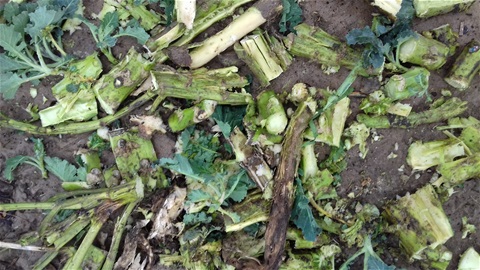
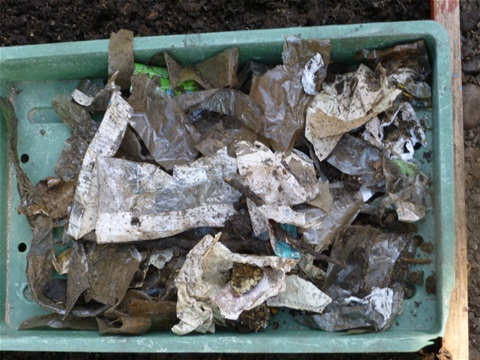
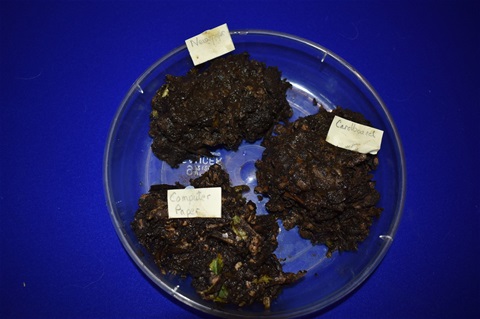
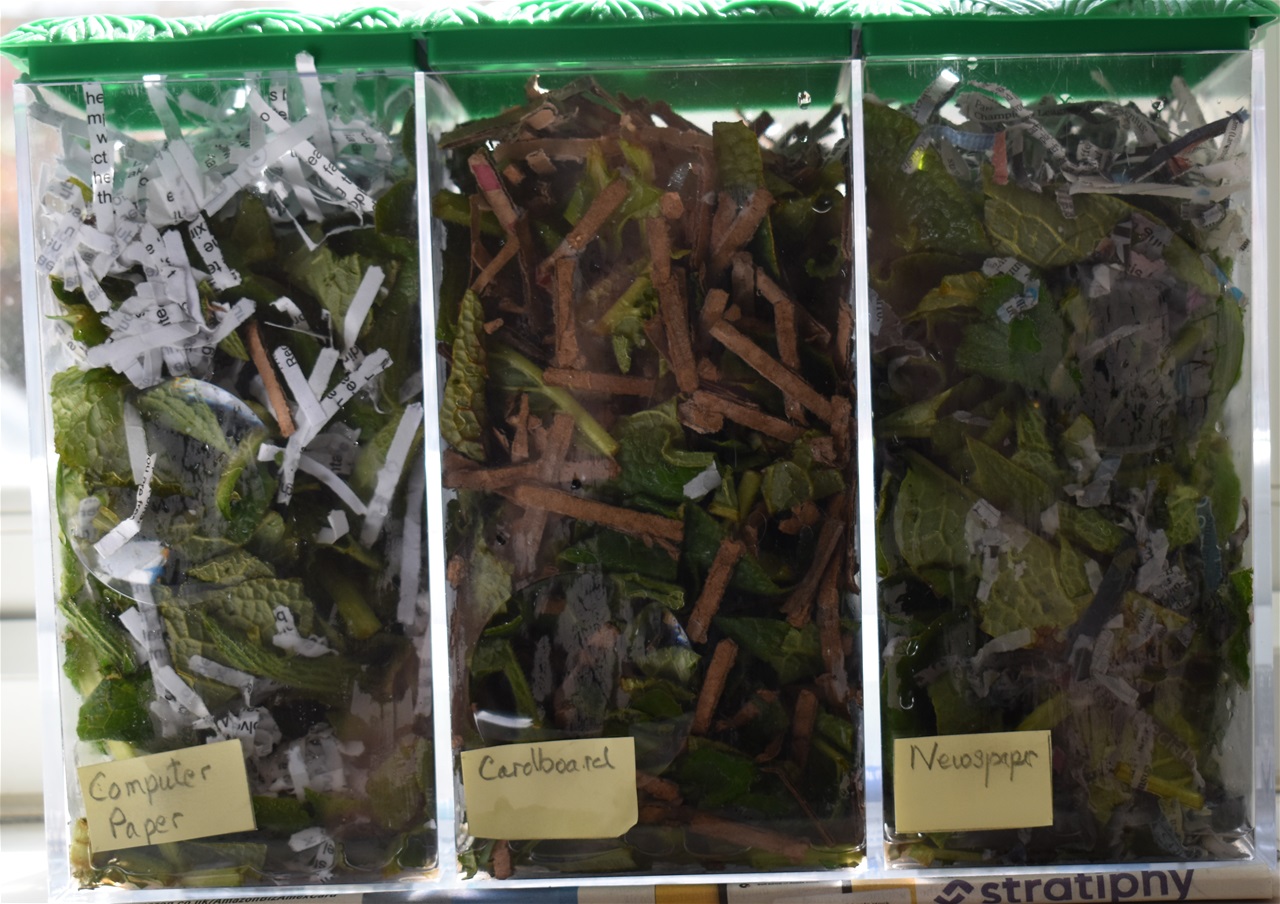
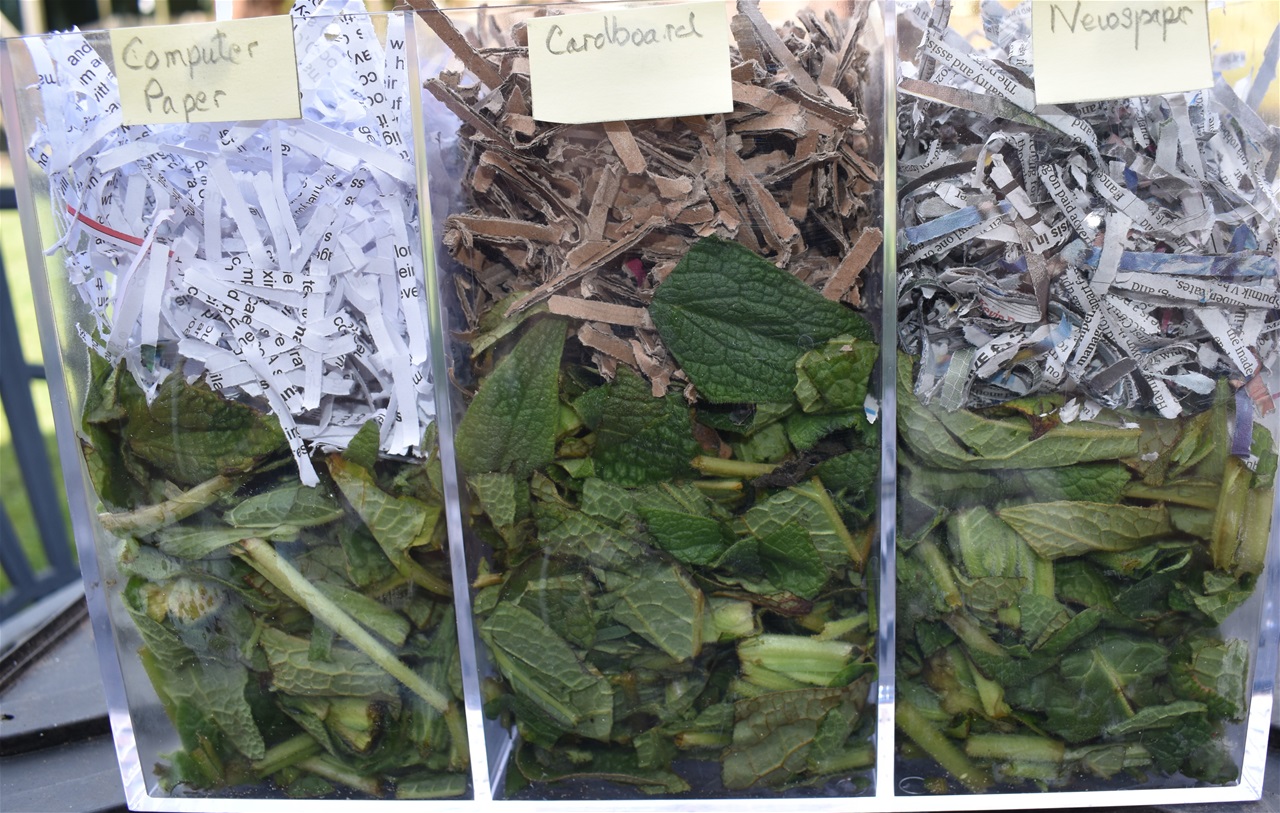
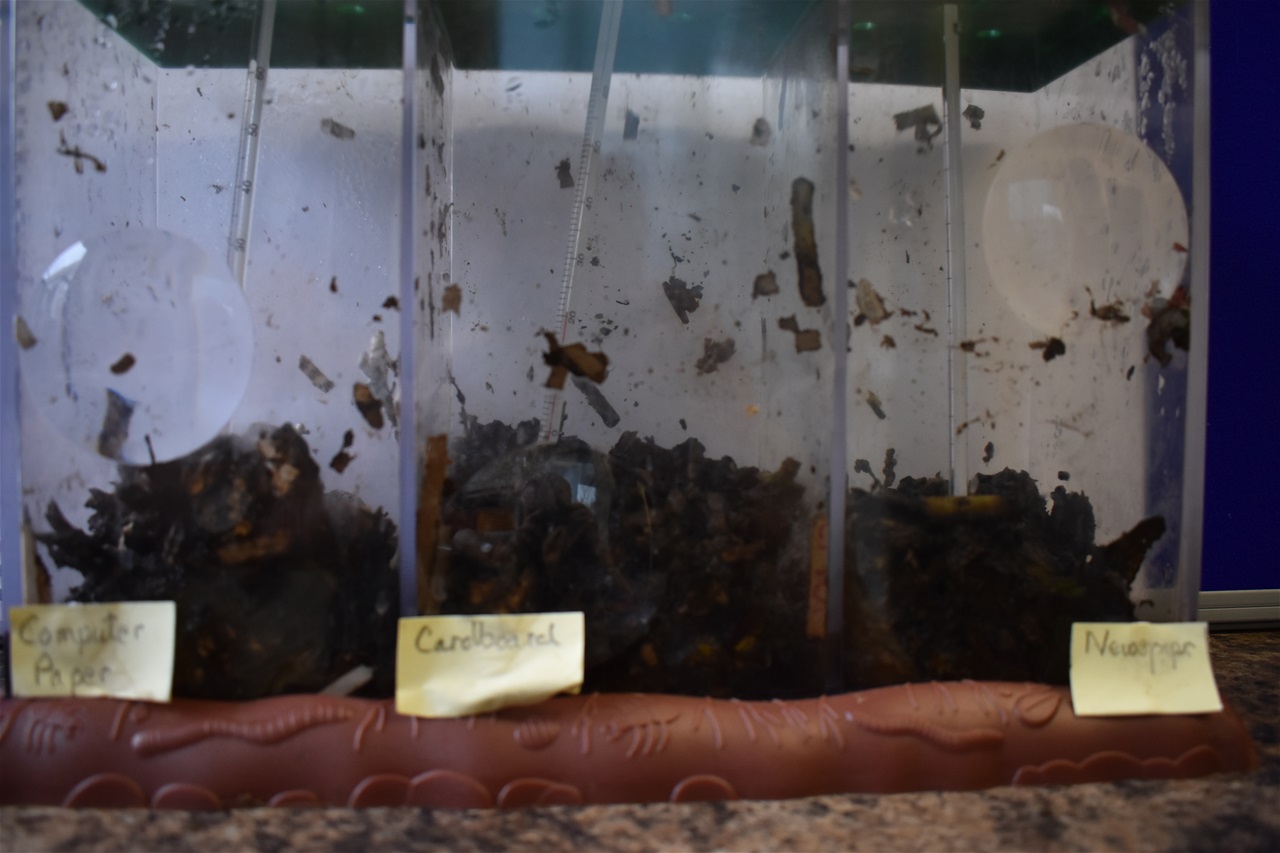
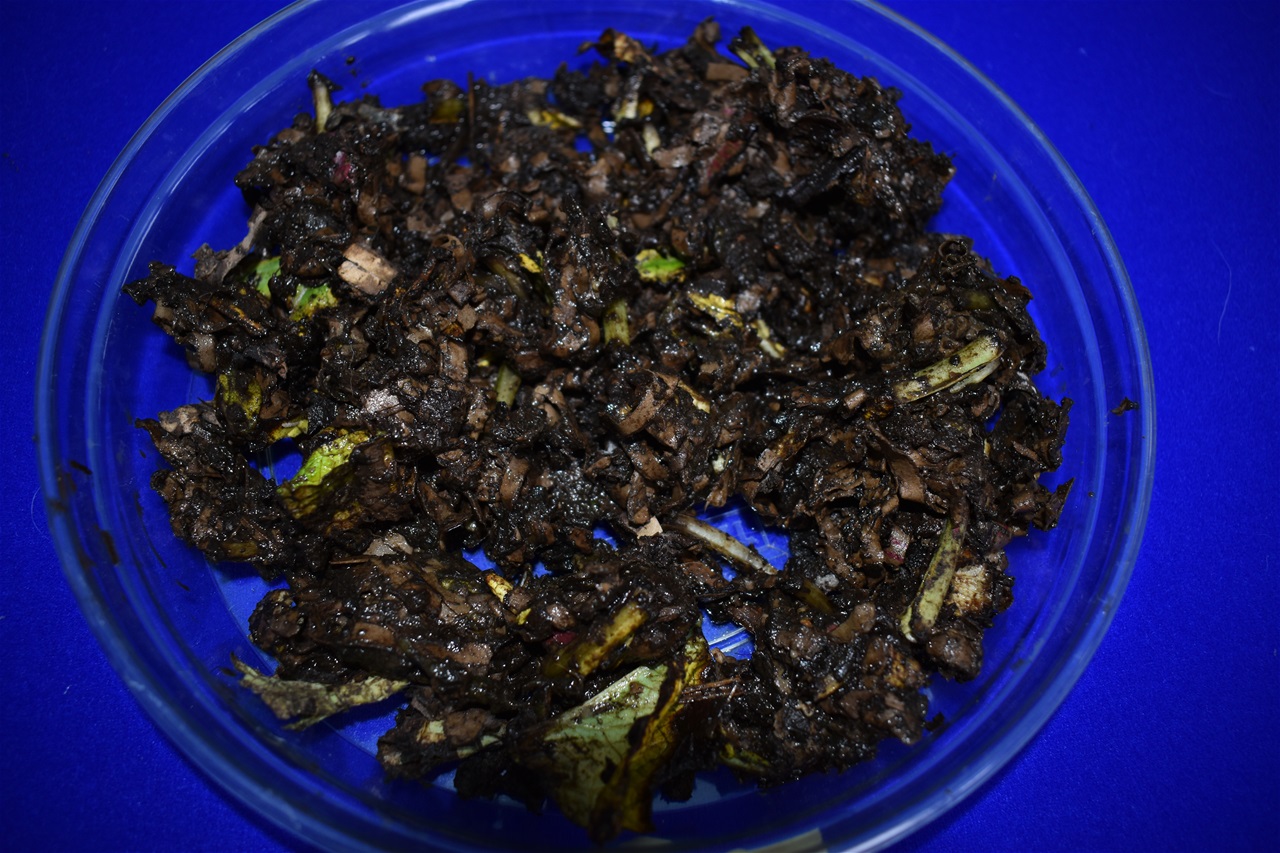
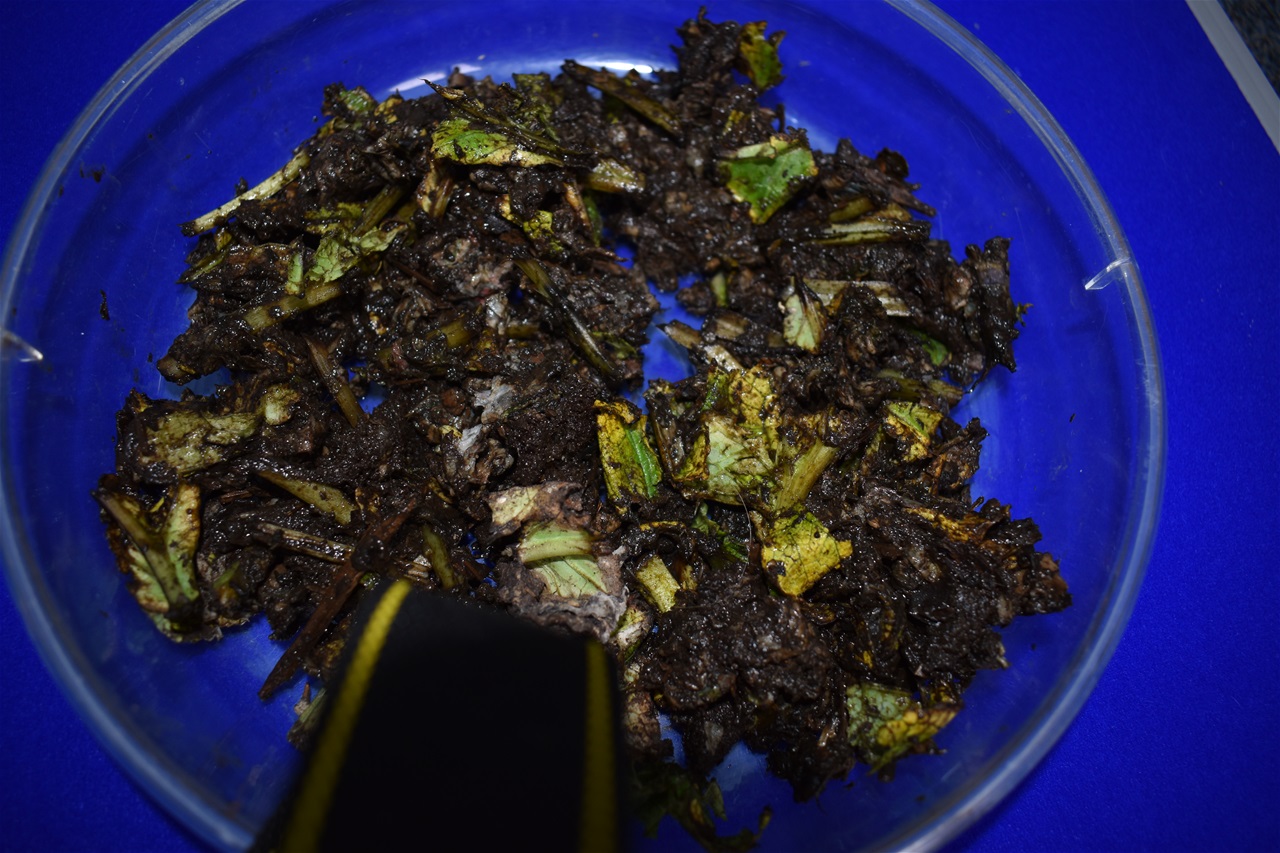
Herbert Wolfeschlege
This gives helpful information on the topic and it's really easy to read. I tried to make a compost pile last year and i used so much nitrogen that my pile almost blew up,


Richard Kurt Mora
very good
Noleia Hetdj'qwegh'lahapo
Very good,

 I feel super much good, interest and helping. I have lot of plant and can use your information to help compost.
I feel super much good, interest and helping. I have lot of plant and can use your information to help compost. 

 , My son said that it is not bad information
, My son said that it is not bad information 

Avery Tran
Thank you very much for helpful content!
Diego
Really, this is an underrated web page, quality content. Thank you
Ahmed
Appreciated work .
priyanka.satti
It is a very useful article!The information included in this is really good along with the reasoning style...came to know many interesting facts!thank you for sharing such good information.
David
I've been searching for a long time to find the right mixture of grass:corrugated cardboard. Thank you for calculator and thank you very much for doing all of this hard work!
Abdul Azeez Alungal
Sir, which inoculum will use for Chicken Slaughter waste Composting process? What is the quantity of inoculum for 1 Ton waste? How much time consume for Chicken Waste decomposition?
Abdul Azeez Alungal
Respected Sir, I would like to start a Commercial Bio Compost Plant using with Chicken Slaughter Waste.Kindly answer me for following questions: 1) Which material use getting best CN Ratio manure.
Ayuni
you are totally amazing. thumbs up! thank you so much
Rod
Thank you for your support. If you feel that something else should be included please let me know
Rod Weston
Here is the address https://www.klickitatcounty.org/DocumentCenter/View/3523/Compost-Calculator
Ken
Hi,
Tried to log into the site which will allow me to calculate the. C/n ratio but doesn't seem to be available
Thảo
I want to mix different wastes food to have a C/N as I like. But I don't know to do. Please help me. Thank you.
Rodney Weston
You can adjust the ratio as you go. If the compost id to wet add browns if to dry add more greens. The key to cooked food composting is the addition of bulking agent. See our Food Composting page
John Bouey
Great discussion on C-N ratios
Farhad
Dear Sir
I have 10 kg Fish food cp=50% + 5 kg molases
would you please how can calculate C:N?
Haider Al-Darraji
how to calculate C;N?